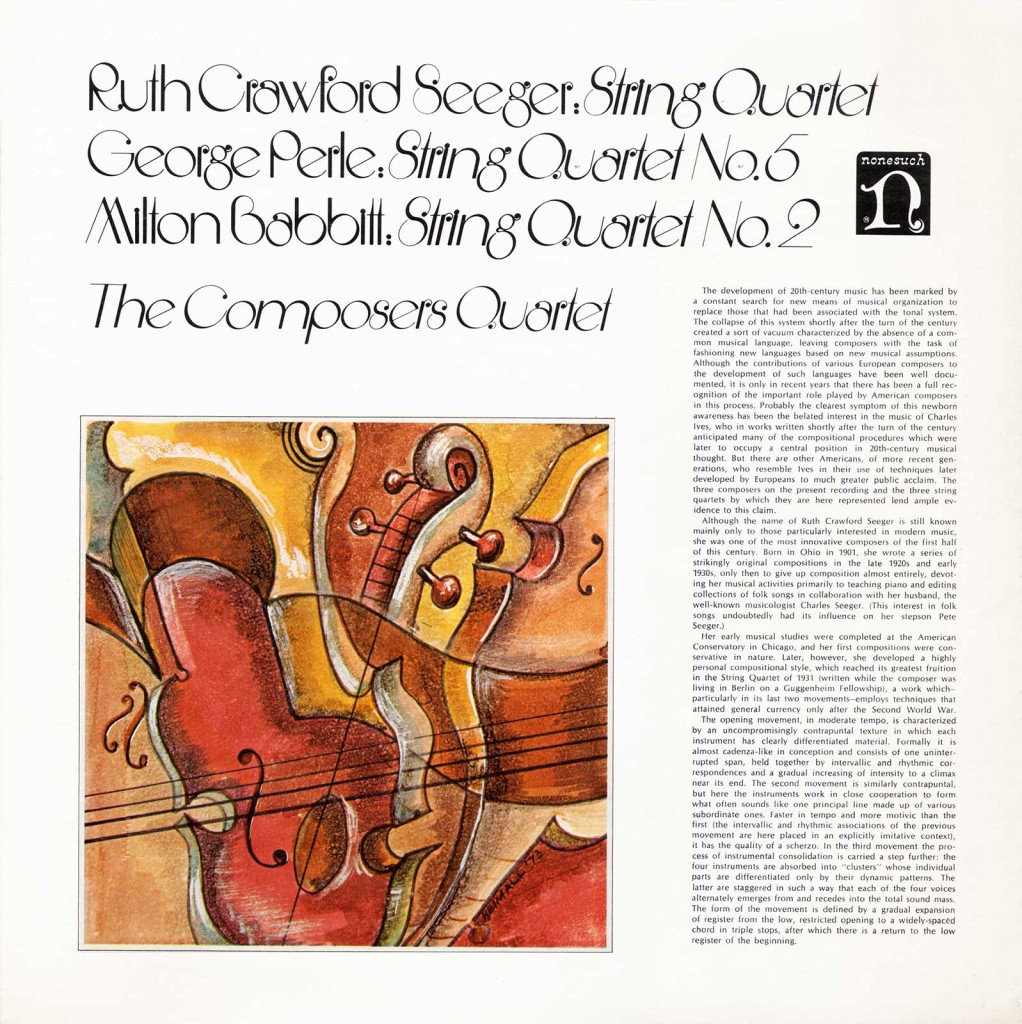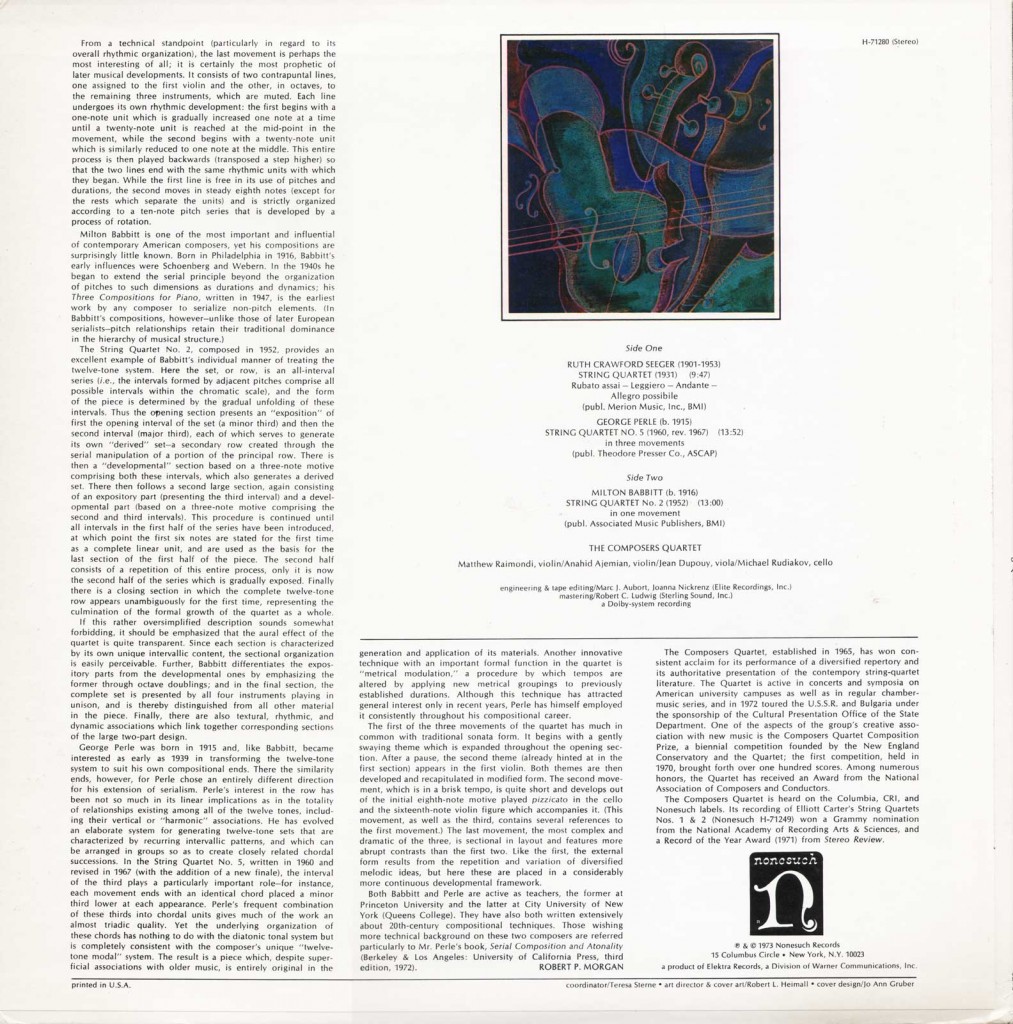Ruth Crawford Seeger
04 June 2012
I first listened to Ruth Crawford Seeger's String Quartet (1931) in a class at the University of Washington in the late 90s with Dr. Diane Thome, who would do much to broaden my musical horizons during my stay there. As a composition major, I was stewing in music from all periods and genres that year, and began to develop an anxiety–an anxiety that I wasn't listening and absorbing fast enough, that I was too dumb to understand some of these modern pieces–when I heard rich, dense music like Seeger's.
On initial listen to some pieces, there is so much that washes over you initially that it can be difficult to let go and absorb the sound viscerally. My mind would kick in heavy once the needle dropped, and my inner reptile would get to work processing sound objects, looking frantically for connections, so that I'd ultimately have something astute to say about the construction of the piece.
I took solace in composers who I could grok on first listen without having to listen and analyse as quickly as possible. This is where I got the name 'Listen Faster' - it's a command I felt was always coming from the Music Dept at UW. Ligeti and Varese were my first blushes at comfort in this context, but I became consciously aware of the issue when I first heard this piece.
I had the opportunity to speak on a Music Technology panel this past weekend at the Grammy's MusicTech summit and spoke to the stellar Passenger String Quartet (no site?) afterwards. Asking them if they knew the piece, I realized I'd been let in on a secret (unfortunately) back in Dr. Thome's class. Ruth's music was historically overshadowed by the valuable theoretical and ethnomusicological work of her husband Charles Seeger and their son Pete Seeger.
I love this piece - it's allusions to timbre's we'd hear in electronic music 20 years later, it's balance, it's rocking-ness.


Comments powered by Talkyard.